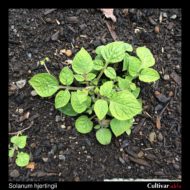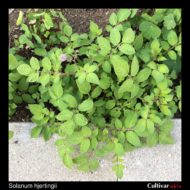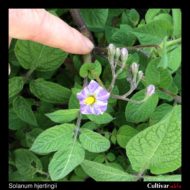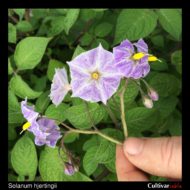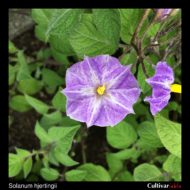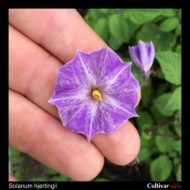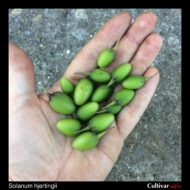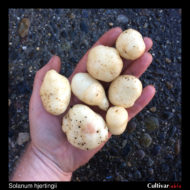Solanum hjertingii
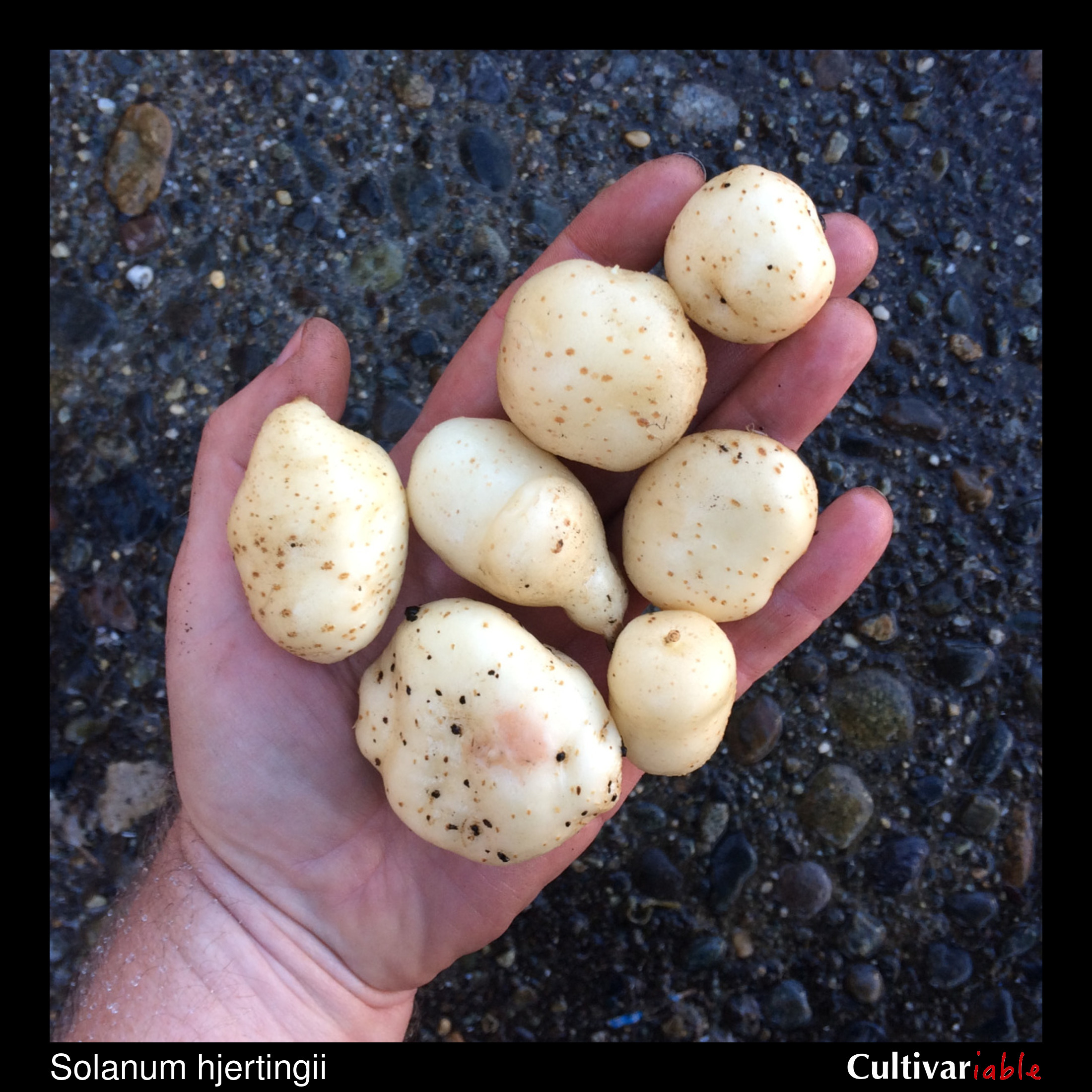
| Common Names | |
| Code | hjt |
| Synonyms | S. fendleri var. physaloides, S. leptosepalum, S. matehualae |
| Clade | 1+4 |
| Series | Longipedicellata |
| Ploidy | Tetraploid (4x) |
| EBN | 2 |
| Tuberization Photoperiod | Short Day |
| Self-compatibility | Yes |
| Nuclear Genome | AB |
| Cytoplasmic Genome | D |
| Citation | Hawkes: A revision of the tuber-bearing Solanums, 2nd ed: 123, 171. 1963. |
Description
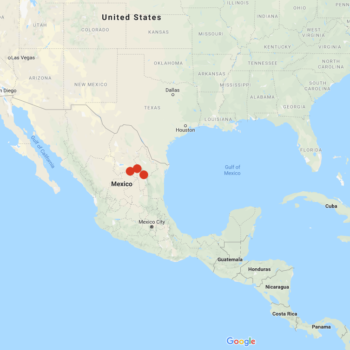
Solanum hjertingii is a northern Mexican species, primarily Coahuila and Nuevo Leon. Small plants, reaching about 7 to 14 inches tall. Stolons as long as three feet. Tubers usually 1 to 2 inches in diameter, sometimes as much as 3 inches. Violet flowers.
The specific epithet, hjertingii, honors Danish botanist Jans Peter Knudsen Hjerting. While there is no completely standardized pronunciation for scientific names, the most common way to pronounce this species is probably so-LAY-num yert-ing-ee-eye.
This species is an allotetraploid, carrying clade 1 and clade 4 genomes. Hawkes (1990) expected an AABB genome configuration for this species, confirmed by Pendinen (2008), who determined that the A genome contributor was S. verrucosum and the B genome contributor was one of S. cardiophyllum, S. ehrenbergii, or S. jamesii. This species appears to be closely related to S. stoloniferum (Van den Berg 2002).
Resistances
S. hjertingii is very resistant to bruising compared to domesticated varieties (Gubb 1989) and has low levels of polyphenol oxidase, an enzyme implicated in potato browning (Sim 1997, Brown 1999).
Vega (1995) found that this species is less frost tolerant than domesticated potato.
I have noticed that this species is unusually vulnerable to black scurf here. I rarely observe it on domesticated varieties or other wild species, but it appears reliably on S. hjertingii. You can even see it in the title picture.
Some accessions of this species carry the Rpi-blb3 gene, conferring late blight resistance.
| Condition | Type | Level of Resistance | Source |
|---|---|---|---|
| Alternaria solani (Early Blight) | Fungus | Somewhat resistant | Jansky 2008 |
| Bruising | Abiotic | Somewhat resistant | Machida-Hirano 2015 |
| Globodera pallida (Pale Cyst Nematode) | Invertebrate | Not resistant | Bachmann-Pfabe 2019 |
| Myzus persicae (Green Peach Aphid) | Invertebrate | Somewhat resistant | Radcliffe 1970 |
| Pectobacterium carotovorum (Blackleg/Soft Rot) | Bacteria | Somewhat resistant | Chung 2011, Machida-Hirano 2015 |
| Phytophthora infestans (Late Blight) | Fungus | Somewhat resistant | Bachmann-Pfabe 2019, Karki 2020 |
| Potato Virus Y (PVY) | Virus | Somewhat resistant | Cai 2011 |
| Rhizoctonia solani (Black Scurf) | Fungus | Not resistant | – |
| Sclerotinia sclerotiorum (White Mold) | Fungus | Not resistant | Jansky 2006 |
Glykoalkaloid content
I have found no account of tuber glycoalkaloids in S. hjertingii. Foliar glycoalkaloids appear to consist primarily of solanine and chaconine (Gregory 1981).
Many of the tubers that I have sampled from plants of this species seemed entirely palatable. A few had a mild bitter aftertaste.
Images
Cultivation
I have found seeds of this species easy to germinate using the standard conditions for S. tuberosum.
Towill (1983) found that seeds of this species stored at 1 to 3 degrees C germinated at 82% after 26 years.
Breeding
Culley (2002) found that triploid progeny of diploid S. tuberosum x S. hjertingii were resistant to bruising and low in polyphenol oxidase.
Crosses with S. tuberosum
| Female | Male | Berry Set |
Seed Set | Germ | Ploidy | Source |
|---|---|---|---|---|---|---|
| S. hjertingii | S. tuberosum (4x) |
None | None | Jackson (1999) | ||
| S. tuberosum (2x) | S. hjertingii | Yes | Yes | Yes | 3x | Culley (2002) |
| S. tuberosum (4x) |
S. hjertingii | Low | None | Jackson (1999) |
Crosses with other species
Watanabe (1991) found that 9.1% of varieties of this species produced 2n pollen and Jackson (1999) found 6-21%, which would be effectively octoploid and probably 4EBN.
| Female | Male | Berry Set |
Seed Set | Germ | Ploidy | Source |
|---|---|---|---|---|---|---|
References
Solanum hjertingii at Solanaceae Source

